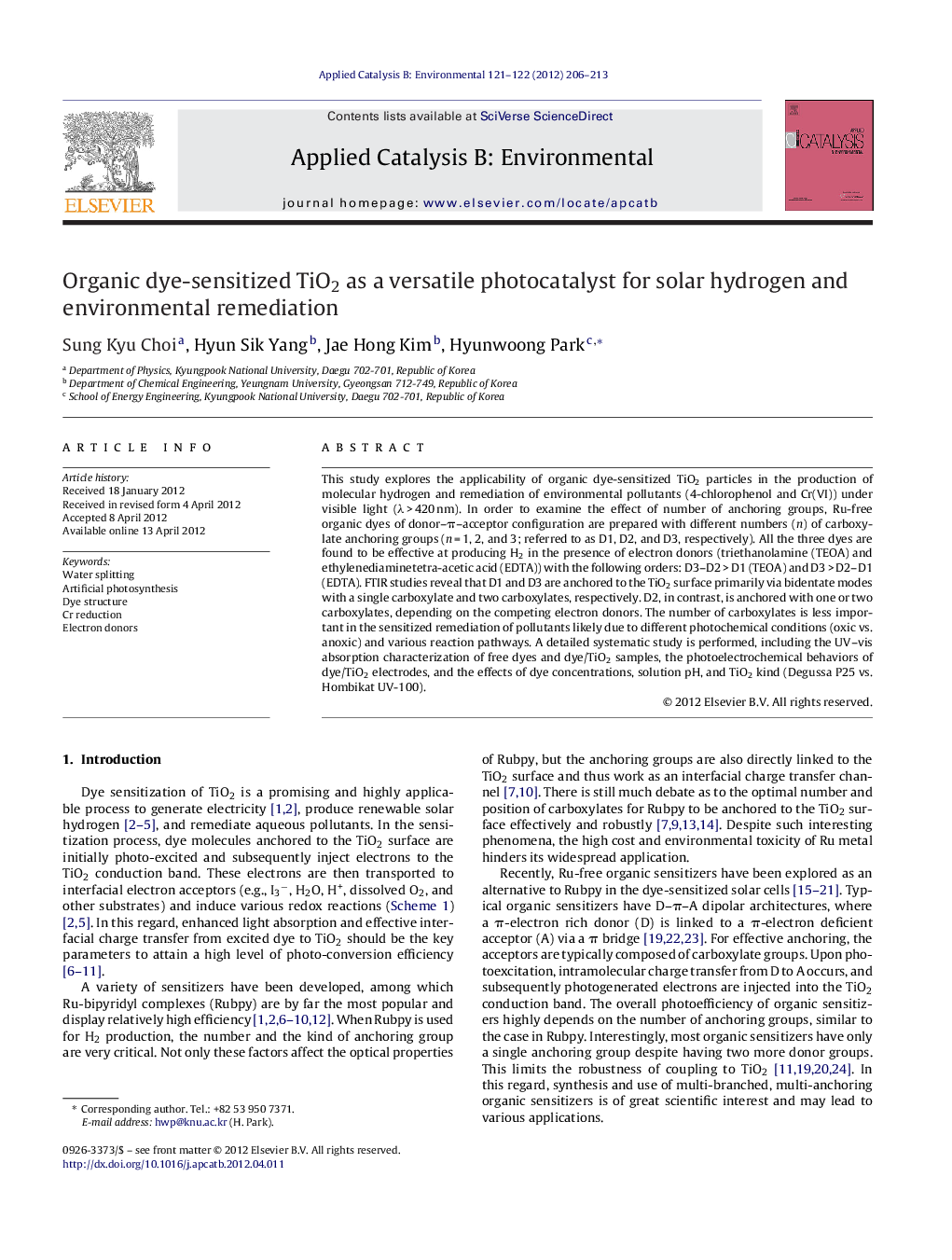| Article ID | Journal | Published Year | Pages | File Type |
|---|---|---|---|---|
| 46192 | Applied Catalysis B: Environmental | 2012 | 8 Pages |
This study explores the applicability of organic dye-sensitized TiO2 particles in the production of molecular hydrogen and remediation of environmental pollutants (4-chlorophenol and Cr(VI)) under visible light (λ > 420 nm). In order to examine the effect of number of anchoring groups, Ru-free organic dyes of donor–π–acceptor configuration are prepared with different numbers (n) of carboxylate anchoring groups (n = 1, 2, and 3; referred to as D1, D2, and D3, respectively). All the three dyes are found to be effective at producing H2 in the presence of electron donors (triethanolamine (TEOA) and ethylenediaminetetra-acetic acid (EDTA)) with the following orders: D3–D2 > D1 (TEOA) and D3 > D2–D1 (EDTA). FTIR studies reveal that D1 and D3 are anchored to the TiO2 surface primarily via bidentate modes with a single carboxylate and two carboxylates, respectively. D2, in contrast, is anchored with one or two carboxylates, depending on the competing electron donors. The number of carboxylates is less important in the sensitized remediation of pollutants likely due to different photochemical conditions (oxic vs. anoxic) and various reaction pathways. A detailed systematic study is performed, including the UV–vis absorption characterization of free dyes and dye/TiO2 samples, the photoelectrochemical behaviors of dye/TiO2 electrodes, and the effects of dye concentrations, solution pH, and TiO2 kind (Degussa P25 vs. Hombikat UV-100).
Graphical abstractFigure optionsDownload full-size imageDownload as PowerPoint slideHighlights► Ru-free organic dyes with different numbers of carboxylate groups are anchored to TiO2. ► All dyes are effective in producing H2 in the presence of electron donors. ► The sensitization effects change due to switched binding modes of the organic dyes. ► The dye structure is less important in the remediation of pollutants.
